► The most iconic Williams cars
► A trip back to Grove’s better days
► Which is your favourite?
Pre-season Formula One testing is over in Barcelona and, for Williams, it signifies a return to the scene of their most recent victory. That win, back in 2012, was an emotional rollercoaster: Pastor Maldonado mugged Fernando Alonso on home turf to seal win number 114 for the team, on what was Frank Williams’ 70th birthday. Yet, within minutes of the race finishing, a fire broke out in the team’s pit garage, destroying equipment and injuring two mechanics.
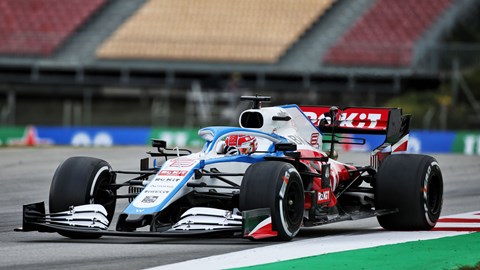
Since then the team’s trajectory has been downward. Third place finishes in the 2014 and ’15 constructors’ championships proved to be false dawns and the team is now the perennial holder of F1’s wooden spoon. They’ve finished 10th and last for the last two seasons, and just getting the new car, the FW43, to Barcelona testing on time was a marked improvement on last year, when they missed the first test due to production problems.
But you don’t have to cast your mind too far back to remember happier times for Williams, when it was the sport’s benchmark. From 1980 to 1997 they won seven drivers’ and nine constructors’ titles, which was more than any other team. So let’s celebrate some of that Williams panache by looking back at five of their best cars.
FW07 (1979, ’80, ’81)
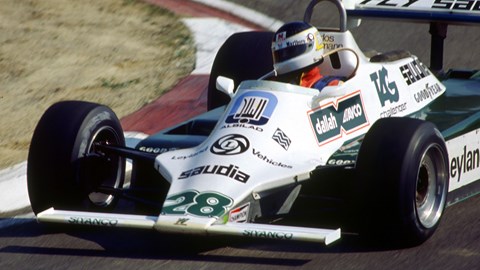
This car put Williams on the map. It won the team’s first race, at Silverstone in 1979, and it went on to claim their first drivers and constructors’ titles the following year.
The secret of its success was its ground effect aerodynamics. Much like the Lotus 79, which had won the world title in ’78, it under-car aerodynamics were light years ahead of the pack and Alan Jones in particular loved it.
The car was rolled out at the 1979 Spanish Grand Prix, the first European race of the season. A few early niggles resulted in retirements early on, but the car was unstoppable in the back-end of the season. Jones won four of the last six races, but he ran out of time to close-down eventual champion Jody Scheckter.
There were no such problems in 1980. Jones dominated the world championship in an updated FW07 and team-mate Carlos Reutemann finished third to ensure Williams claimed its first constructors title.
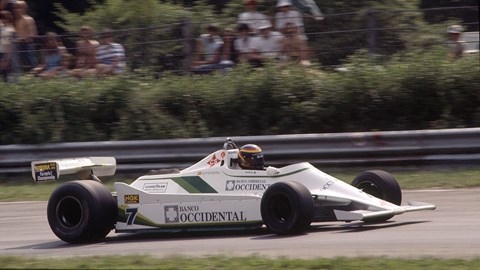
But two seasons of competition weren’t enough for the FW07. Further updates, mainly around the suspension, earned the ’81 car a C-spec designation, and it was still mightily competitive. Carlos Reutemann took the championship fight down to the final race of the season in Las Vegas, only losing the title to Nelson Piquet by one point.
If that wasn’t enough, tech boss Patrick Head then bastardised the car at the end of ’81 to test the Williams six-wheeler (four driven wheels). Jones tested it at Donington Park, only for the concept to be outlawed by the governing body soon afterwards. Those were to be the last laps turned by the FW07, which had won 15 races, one drivers title and two constructors titles.
FW11 (1986, ’87)
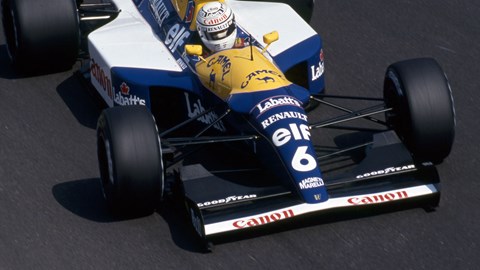
Rarely has a car had a more dramatic life than the Williams FW11. It was brilliantly balanced, making it very driver-friendly, and it had a beast of an engine. Honda’s 1.5-litre V6 turbo pushed out in excess of 1200bhp in qualifying trim, dwarfing the opposition and making the FW11 the car to beat in 1986 and ’87.
It is also the car responsible for the introduction of active suspension in F1. An 18-month gestation period saw the system first introduced at the ’87 Italian Grand Prix, which Nelson Piquet dominated, coming home 49s ahead of Nigel Mansell in the passively suspended sister car.
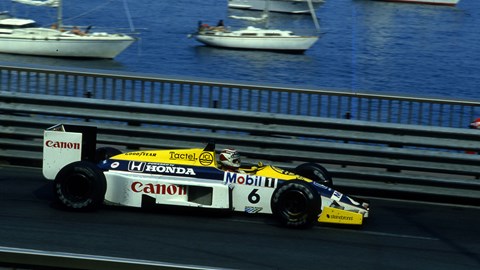
But FW11 was also the Williams that carried a lot of the team’s emotional baggage. Just weeks before the start of the season, Frank Williams was paralysed in a car crash and, according to his wife Ginny, the success of FW11 was one of the things that helped Frank through his recuperation.
How cruel, then, that Mansell should have lost the championship at the final race in Adelaide, following a tyre blow-out.
FW14 (1991, ’92)
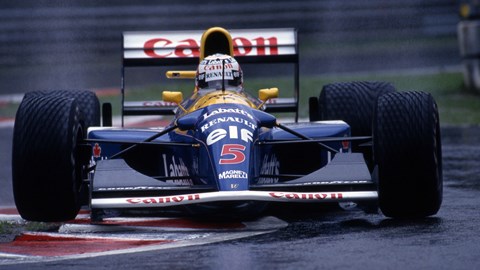
This was the car that lured Nigel Mansell out of retirement in 1991. He’d spectacularly thrown in the towel mid-1990, while at Ferrari, but the lure of an Adrian Newey-designed, Renault-powered Williams proved irresistible.
The car was unreliable early on, Mansell retiring from the opening three races of ’91, but once the hydraulics systems had been bolstered, the car was hugely successful. Mansell and Riccardo Patrese won seven races, but it was too little too late for ’91; Ayrton Senna and McLaren clinched the word titles.
It was a different story in ’92 with the FW14B, which was a refined version of FW14 with a new Renault engine. Mansell won the opening five races and bagged the championship at round 10, the Hungarian Grand Prix.
The FW14B was arguably the most sophisticated F1 car of all time. Development was relentless and for a short period towards the end of the year it had a semi-automatic gearbox, active suspension, traction control and four-wheel-steer. Irresistible.
FW18 (1996)
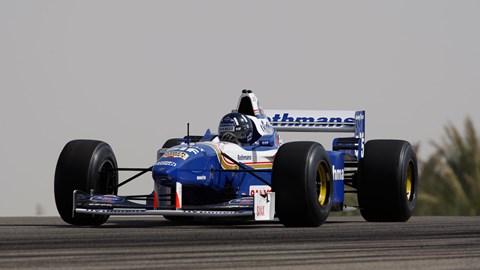
This was the car that took Damon Hill to the 1996 world title. In so doing, he became the first son of a world champion (Graham) to repeat the feat and even prompted Murray Walker to stop his BBC commentary because he had a lump in his throat.
The FW18 was mesmerisingly brilliant in a year when other teams dropped the ball. Reigning champions Benetton were in a state of flux, following the departure of Michael Schumacher to Ferrari, who were themselves in a re-building phase. From the outset, this was a title fight between Hill and team-mate Jacques Villeneuve.
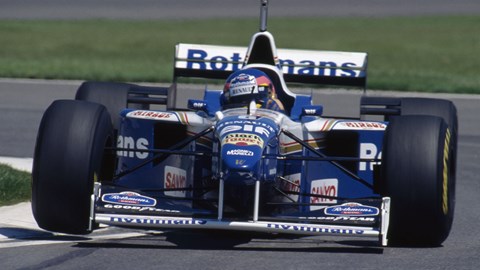
The car was an evolution of the previous year’s FW17, although a lot was new under the hood, according to tech boss Patrick Head. Crucially, it was reliable from the get-go. It completed 1778 of a possible 2028 racing laps, Hill and Villeneuve winning 12 of the year’s 16 races.
FW25 (2003)
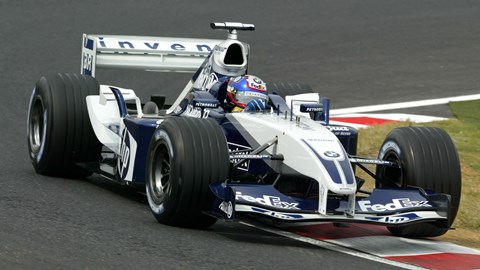
A case of coulda-woulda-shoulda. The car coulda won more races than it did; its pace woulda worried Michael Schumacher and it shoulda challenged for the world title.
All of the basic ingredients were there: the FW25 was aerodynamically sound, its development having been led by former Ferrari aerodynamicist Antonia Terzi, and it was powered by BMW’s hugely powerful V10. In Ralf Schumacher and Juan Pablo Montoya, the drivers were decent too, yet the season was ultimately disappointing.
Montoya should have won the season-opener in Australia. He was leading, until he spun close to the end of the race and finished second to David Coulthard’s McLaren. In Austria Montoya was once again leading, until he was stopped by an engine failure, and something similar happened in Japan as well.
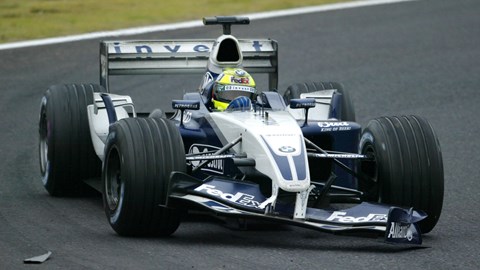
‘That was the best F1 car I ever drove,’ Montoya said recently. ‘So powerful and well-balanced; I loved it.’
In the end Williams finished second to Ferrari in the constructors championship and Montoya third in the drivers table, but the car – and the lead driver – deserved more.